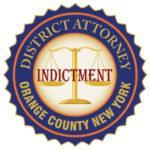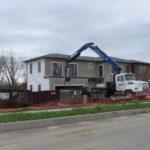NEW YORK – In the wake of the recent
railroad grade crossing crash that killed six people, US Senators Charles
Schumer (D-NY) and Richard Blumenthal (D-CT) are introducing legislation
aimed at reducing similar collisions in the future.
The Valhalla crash killed the driver of an SUV that crossed the tracks
and five passengers on the Metro-North Harlem Line commuter trail.
The new legislation would concentrate on engineering, education and enforcement.
Schumer said Sunday the measure would provide new resources to the Federal
Railroad Administration, states and communities to make critical engineering
and safety upgrades at rail crossings.
It would improve lights, signals and signs at crossings and building of
bridges and tunnels to separate from rail track.
The FRA receives $220 million annually to eliminate such hazards and
the new bill would increase that by $50 million per year for four years.
It would also revive the FRA’s Rail Line Relocation and Improvement
Capital Grant program, which until 2009 had helped states and communities
relocate a rail line for safety and other purposes. The legislation would
reauthorize the program and provide $25 million per year for four years
and clarify that Congress would fund a rail line’s relocation only
for safety purposes.
The legislation would also revive the FRA’s Highway-Rail Grade Crossing
Grants Safety program created by Congress in 2008, but never implemented.
It was designed to provide grants to states for targeting engineering
and technology issues, public awareness and education activities and targeted
law enforcement to minimize grade crossing collisions.
The measure would reauthorize the program for four years and fund it at
$100 million per year for four years.
It would also strengthen the federal government’s partnership with
Operation Lifesaver, a non-profit organization that conducts public safety
awareness and education campaigns and works with law enforcement officials
to prevent fatalities and injuries at highway-rail grade crossings and
along railroad rights-of-way.







